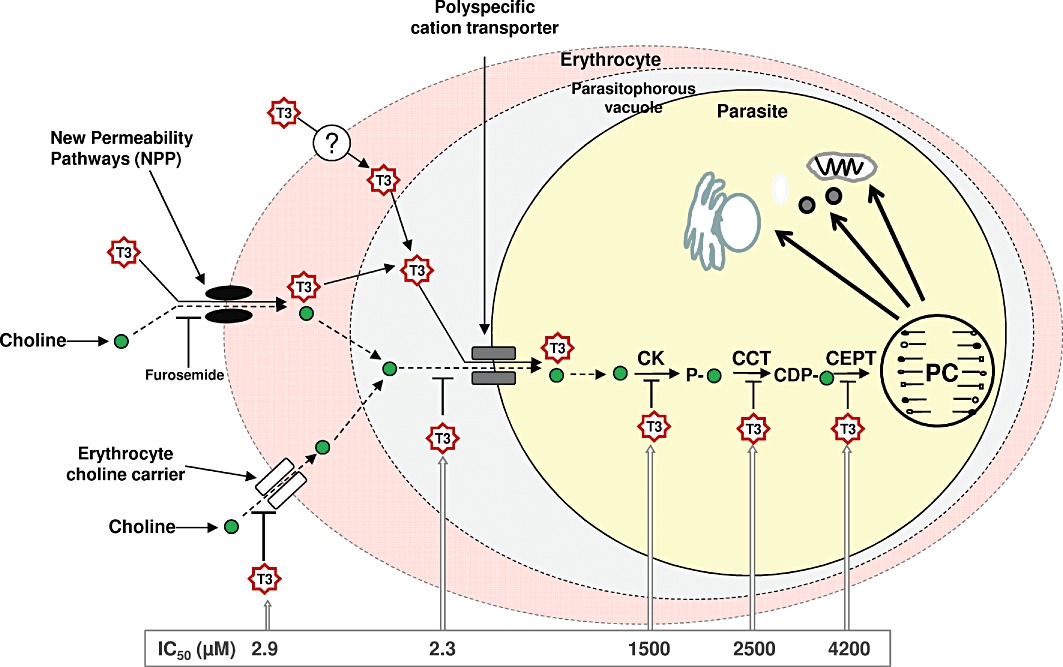Figure 7.

The fate of albitiazolium and choline in the P. falciparum-infected erythrocyte and albitiazolium-induced inhibition of PC biosynthesis. Choline enters the infected erythrocyte essentially through the erythrocyte choline carrier and a small amount via furosemide-sensitive NPPs. Choline is then transported into the parasite by the parasite choline carrier and used to synthesize PC via the Kennedy pathway. The choline analogue albitiazolium enters the infected erythrocyte via furosemide-sensitive NPPs and a furosemide-insensitive pathway. Albitiazolium inhibits choline transport by the erythrocyte choline carrier but is not transported by it. The choline analogue is taken up by the parasite via the parasite choline carrier, thus inhibiting choline transport. Albitiazolium is accumulated in the parasite and exerts its activity principally on the different steps of the de novo PC biosynthesis pathway. It should be noted that albitiazolium is abbreviated to ‘T3’ for convenience in this diagram.
